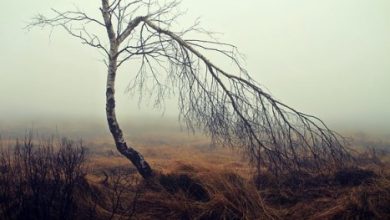Laura Mulvey, a British feminist film theorist and filmmaker, gained prominence through her influential essay “Visual Pleasure and Narrative Cinema” (1975). In this groundbreaking work, Mulvey introduced the concept of the “male gaze” in film and conducted a critical analysis of the portrayal of women in movies. She argued that mainstream cinema predominantly caters to the male viewer, objectifying and sexualizing female characters. Mulvey delved into the power dynamics and psychoanalytic implications of scopophilia, which refers to the pleasure derived from looking, and examined how women are often depicted as objects of desire and passive subjects in relation to the active male protagonist.
Mulvey’s essay became a foundational text in feminist film theory and has had a significant impact on the field. Her work challenged traditional notions of spectatorship and highlighted the ways in which the cinematic apparatus reinforces patriarchal ideologies and gender inequalities. Mulvey’s analysis opened up discussions about the representation and treatment of women in film and paved the way for further feminist analyses of visual media.
In addition to her theoretical contributions, Mulvey has also directed and produced several experimental and documentary films. She continues to be an influential figure in film studies and feminist theory.
Visual Pleasure and Narrative Cinema | Summary
In the first section of her work, titled “Pleasure in Looking/Fascination with the Human Form,” Mulvey explores Freud’s concept of scopophilia and its relevance to the experience of viewing films. According to Mulvey, scopophilia refers to the pleasure derived from looking and is not limited to erotic zones. It involves treating people as objects and subjecting them to a gaze that is controlling and inquisitive.
In the context of film, scopophilia comes into play because it presents a world that remains indifferent to the presence of the audience. This creates a sense of separation and allows viewers to engage in voyeuristic fantasies. Mulvey draws a parallel between a peeping tom peering into a lit window from the darkness outside and the experience of watching a film in a dark auditorium. The contrast between the darkness of the theater and the illuminated screen serves to distance viewers from the on-screen characters and events while simultaneously drawing them into a world that unfolds before them. This creates an illusion of observing a private world as an outsider.
However, Mulvey’s argument about scopophilia encompasses more than just the sense of separation. She also highlights the aspect of identification experienced by the audience. Since films primarily focus on the human form, there is a desire to look that intertwines with a fascination for likeness and recognition. In this way, viewers identify with the images on screen, similar to how a child recognizes themselves in a mirror.
What becomes problematic is that the representation on screen is often portrayed as “more perfect” than the audience themselves. Mulvey emphasizes this phenomenon in the star system, where glamorous figures embody the ordinary. Drawing on Freudian theory, Mulvey explains that watching the protagonist on screen allows the viewer to temporarily lose their own sense of self (ego) while reinforcing their ego by witnessing a superior version of themselves (a representation of masculinity) triumph over the inferior feminine form.
It is evident how this process of constructing the ego through representations of masculinity in classic Hollywood cinema could be problematic from a feminist perspective. Such constructions often rely on the objectification and domination of women, which goes against feminist ideals.
In Mulvey’s second section titled “Woman as Image, Man as Bearer of the Look,” her focus shifts to what transpires within the film itself. She argues that in the realm of cinema, men assume the active role of the viewer, while women are reduced to passive subjects who exist to fulfill male desires. Mulvey provides several examples to support her theory, such as pin-ups, strip-tease, and performances in Ziegfeld and Busby Berkeley productions. These examples highlight how the female presence within the film interrupts the narrative flow.
Mulvey contends that the “showgirl” character serves the purpose of technically unifying the two looks—the gaze of the man within the film and that of the man in the audience or any viewer—creating an active/passive relationship that is displayed on screen without any apparent disruption to the story. This dynamic of active male viewership and passive female objectification extends beyond theatrical films and can be observed in other forms of media, such as conventional close-ups of legs or faces. These close-ups do not contribute to the narrative but instead exist as flat visuals, contrasting with the illusionary depth typically associated with Hollywood films.
As Hollywood filmmaking aims to replicate the natural conditions of human perception, Mulvey argues that audiences perceive the male’s erotic fantasies as reality. The rest of the film, through techniques like deep focus shots, camera movements, and continuity editing, orients viewers in time and space. This phenomenon of female passivity, according to Mulvey, arises from the notion that the male figure cannot bear the burden of being sexually objectified. Patriarchal structures reinforce the need for men to establish their egos through active and oppressive roles in relation to women.
The theories presented in these two sections offer an explanation for the prevalence of hyper-masculine and hyper-patriarchal representations on screen, as well as the impact they have on viewers. This explanation serves to guide filmmakers in their efforts to eliminate the objectification of women and instead provide them with agency and autonomy both within and outside of the cinematic realm.
Mulvey’s theories provide a framework for the feminist movement by articulating the specific aspects that need to be addressed and changed in filmmaking. This involves eradicating the female eroticization that has traditionally served as a draw for audiences and instead empowering women with meaningful roles and choices on screen. By challenging the patriarchal norms that have governed cinematic representation, Mulvey’s work points towards a shift in power dynamics and the potential for more equitable portrayals of women in film.
Furthermore, Mulvey argues that through the critical analysis of pleasure derived from Hollywood cinema, these existing structures can be dismantled. This, in turn, paves the way for a new form of cinematic pleasure that is no longer rooted in patriarchal eroticization and the subjugation of the female form. By exposing the underlying mechanisms of pleasure in film and advocating for their transformation, Mulvey wields her analysis as a powerful political tool.
Visual Pleasure and Narrative Cinema | Analysis
In Mulvey’s analysis, she discusses the Freudian concept of “Woman as lack,” which suggests that women are perceived as lacking a penis and, therefore, phallic power. This lack is seen as a threat to the patriarchal order and can be symbolically represented as either a castration threat or as a mother who desires to possess a penis through her child.
Mulvey also explores the notion of scopophilia, which refers to the pleasure derived from looking at and objectifying others. Cinema taps into voyeuristic fantasies, where viewers actively engage in objectifying the unknowing subjects on screen, treating them as objects to be looked at.
Furthermore, Mulvey discusses the phenomenon of narcissistic identification, whereby viewers become so absorbed in the image on screen that they forget themselves and overly identify with the characters or images presented. This identification operates on a narcissistic level, where the ego is involved, and it functions within the realm of the Symbolic.
It is important to note that these concepts draw from psychoanalytic theory and are presented as part of Mulvey’s analysis. They contribute to her examination of the dynamics of power, desire, and identification within the realm of cinema, shedding light on the underlying mechanisms that shape the cinematic experience.
Mulvey argues that there exists a contradiction between voyeuristic scopophilia and narcissistic identification within the cinematic experience. In the fantasy world portrayed on screen, the representation of women crystallizes the paradoxical nature of the look, which can be simultaneously pleasurable and threatening.
According to Mulvey, the active viewer in the cinematic realm is always theoretically or symbolically male, while the passive female characters serve as erotic objects or spectacles to be looked at. This notion of “to-be-looked-at-ness” remains a central concept in her essay and applies both within the film’s narrative (intra-diegetically) and to the audience as viewers (extra-diegetically).
The audience tends to identify with the active male characters who represent the powerful ideal ego, akin to the concept of the ego developed in the mirror stage. Woman, on the other hand, is often depicted as a sexual object and is subject to control through fetishization or punishment due to the underlying castration threat she represents.
However, Mulvey suggests that this conventional mode of providing pleasure in films can be disrupted. She introduces three distinct looks associated with cinema: the look of the camera, the way the audience looks at the film, and the way the characters look at each other within the narrative. Mulvey proposes the possibility of freeing the look of the camera and the look of the audience from their subservience to the narrative logic and the characters’ gazes. By doing so, the satisfaction, pleasure, and privilege of the viewer may be challenged and ultimately dismantled, leading to a transformative cinematic experience.
In essence, Mulvey advocates for a reconfiguration of the cinematic gaze to break away from traditional structures and power dynamics, which she believes will ultimately disrupt and redefine the pleasure derived from film.
In exploring the concept of pleasure in looking and the implications it has within the cinematic experience, Mulvey argues that pleasure in looking is tied to the audience’s ability to recognize themselves in the images presented on screen, perceiving them as more complete and perfect versions of themselves. This recognition creates a fascination and desire to look further.
However, Mulvey notes a contradiction in this pleasure. On one hand, there is scopophilia, which is the pleasure derived from objectifying others for sexual stimulation through sight. On the other hand, there is identification, where the audience identifies with the image seen on screen. These two aspects create a dichotomy, as one separates the viewer’s erotic identity from the object on the screen, while the other demands identification and fascination with the likeness presented.
Both scopophilia and identification are formative structures of pleasure in looking, but they only hold meaning when attached to idealizations. They exist in an imagined reality that challenges empirical objectivity. Mulvey suggests that cinema constructs this illusionary reality, which exists in a fantasy world governed by its own rules and desires. However, this fantasy is subject to the laws of the symbolic order, which articulate desire and meaning, ultimately leading back to the castration complex.
Furthermore, Mulvey argues that pleasure in looking has been divided between the active/male gaze and the passive/female object. Women are often sexually objectified in cinema, coded for visual and erotic impact. The dominant theme revolves around the spectacle of women, who become catalysts within the narrative, driving the actions of the male characters. The male figure, as the representative of power, controls both the film fantasy and the gaze. The spectator identifies with this controlling character, projecting their own look onto the screen surrogate and experiencing a sense of power and control.
The tension between how women are represented in film and the conventions of storytelling creates a division within the cinematic experience. The spectator’s gaze oscillates between direct scopophilic contact with the displayed female form and fascination with the image of their likeness within the illusory space of the film. This tension and shifting gaze structure the narrative, shaping the spectator’s experience.
Mulvey delves into the psychoanalytic implications of pleasure and displeasure in cinema, particularly regarding the representation of women. She argues that the female character embodies the castration complex, which poses a threat of castration and generates feelings of displeasure for the male unconscious. To escape this tension, the male unconscious employs strategies such as the reenactment of the trauma or the substitution of a fetish object. These strategies revolve around scopophilia, the pleasure derived from looking, which can manifest as sadism or fetishism.
Mulvey contends that traditional narrative film offers pleasure and displeasure through the interplay of scopophilia and identification. While sadistic scopophilia demands a narrative and change in the other person, fetishistic scopophilia focuses solely on the look and exists outside linear time. These mechanisms shape the formal attributes of cinema and add layers of significance tied to patriarchal demands.
The contradiction between pleasure and displeasure in cinema arises from the emphasis on the look. Cinematic codes and their relationship to external structures must be deconstructed to challenge mainstream film and its pleasure. Mulvey suggests breaking down the voyeuristic and scopophilic aspects of cinema by reevaluating the different looks associated with it: the camera, the audience, and the characters within the screen illusion. The conventions of narrative film subordinate the first two looks to maintain the illusion of reality and prevent distancing awareness. However, Mulvey argues that the representation of the female image as a castration threat disrupts this illusion and freezes the spectator’s look.
Mulvey advocates for freeing the look of the camera into its materiality and the look of the audience into dialectics and passionate detachment. This would challenge the traditional film form and its reliance on voyeuristic mechanisms. She suggests that such a change would be welcomed by women, as it would challenge the exploitation and objectification they often face in film. Mulvey’s analysis sheds light on the significance of female representation in cinema and the patriarchal structures that shape its conventions. It highlights the unequal treatment of men and women in film and calls for a reevaluation of the role and portrayal of women in cinema.




